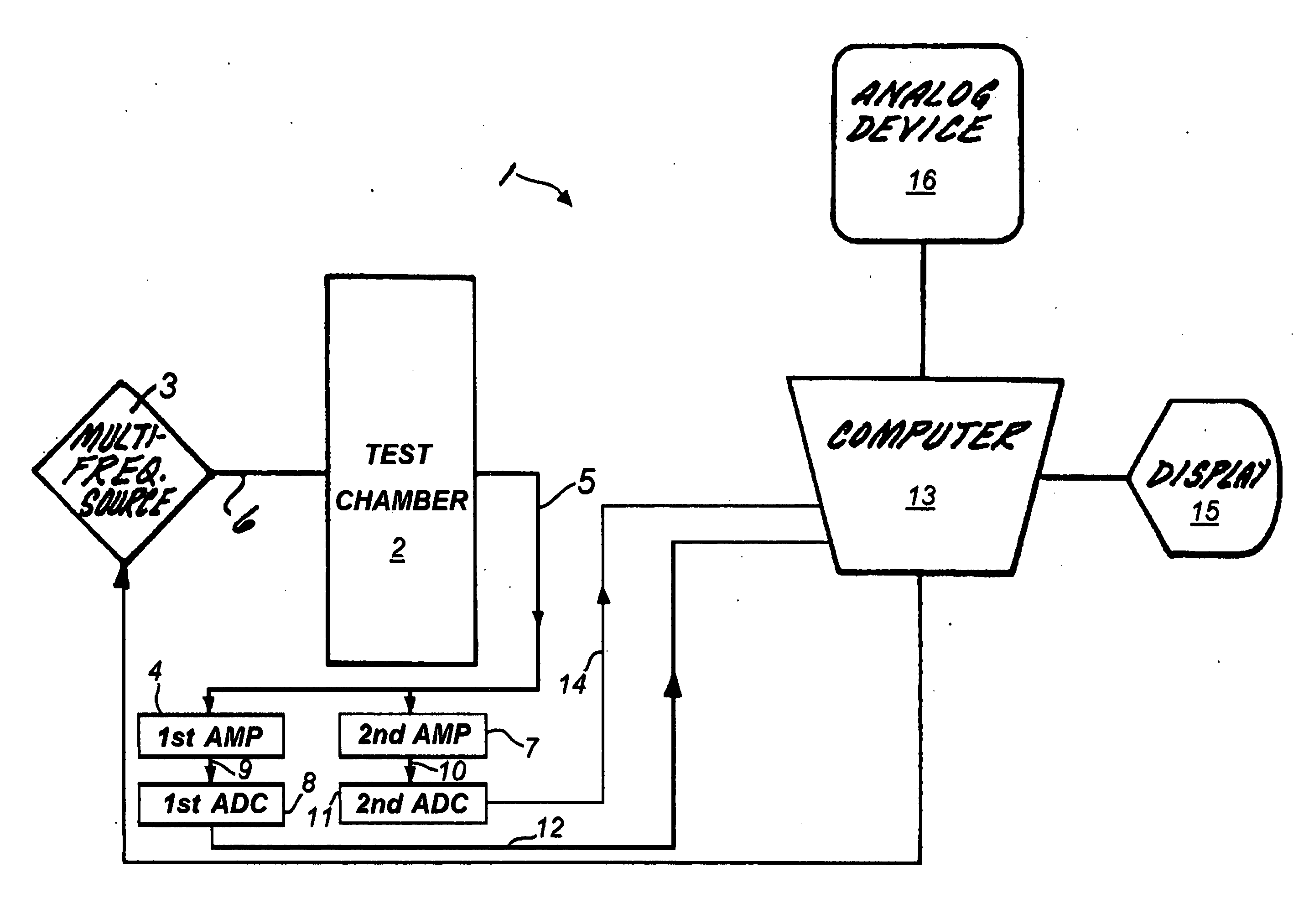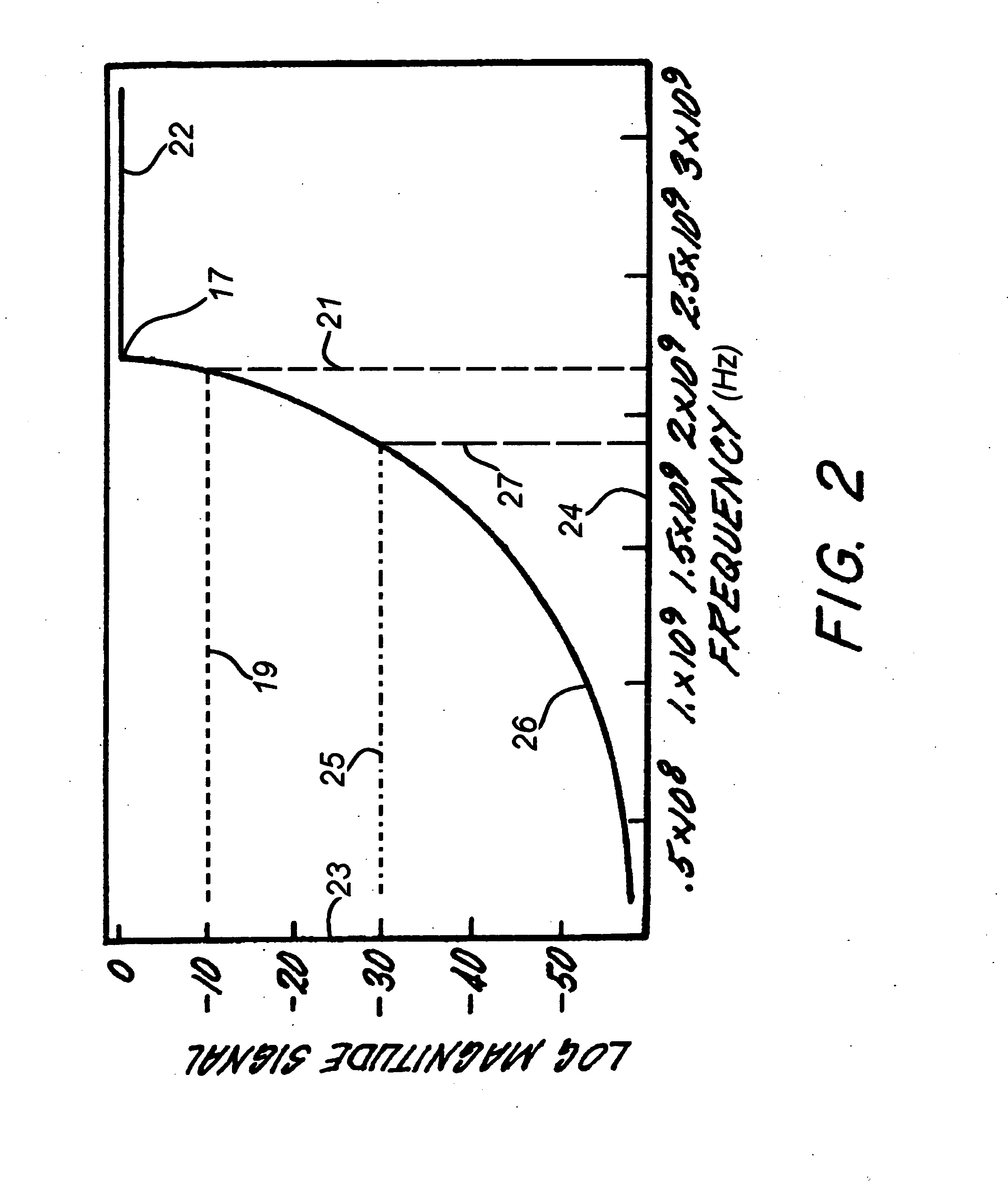Signal processing in guided wave cutoff spectroscopy
a technology of signal processing and guided wave, applied in the direction of optical radiation measurement, instruments, spectrometry/spectrophotometry/monochromators, etc., can solve problems such as attenuating phase noise, and achieve the effect of improving resolution and increasing measurement bandwidth
- Summary
- Abstract
- Description
- Claims
- Application Information
AI Technical Summary
Benefits of technology
Problems solved by technology
Method used
Image
Examples
Embodiment Construction
[0058]The present invention is shown generally at 1 in the block diagram of FIG. 1, where the test chamber 2 includes some means for introducing a material to be tested, the means typically being a pipe that transports the material under test through the chamber as a flowable material such as a liquid or slurry. A swept or stepped frequency source 3 is interconnected via path 6 with the chamber 2, the source 3 typically being an oscillator capable of generating multiple radio frequencies in the range of thirty megahertz (30 MHz) to four gigahertz (GHz). Depending upon the material under test and the physical characteristics of the chamber 2, some portion of the radio frequency spectrum is emitted into the chamber and passes through the material under test that is residing at that moment within the chamber. The test chamber 2 is shaped and dimensioned to create frequency dependent responses when subjected to electromagnetic radiation, typically ranging from RF and into the microwave ...
PUM
 Login to View More
Login to View More Abstract
Description
Claims
Application Information
 Login to View More
Login to View More - R&D
- Intellectual Property
- Life Sciences
- Materials
- Tech Scout
- Unparalleled Data Quality
- Higher Quality Content
- 60% Fewer Hallucinations
Browse by: Latest US Patents, China's latest patents, Technical Efficacy Thesaurus, Application Domain, Technology Topic, Popular Technical Reports.
© 2025 PatSnap. All rights reserved.Legal|Privacy policy|Modern Slavery Act Transparency Statement|Sitemap|About US| Contact US: help@patsnap.com



